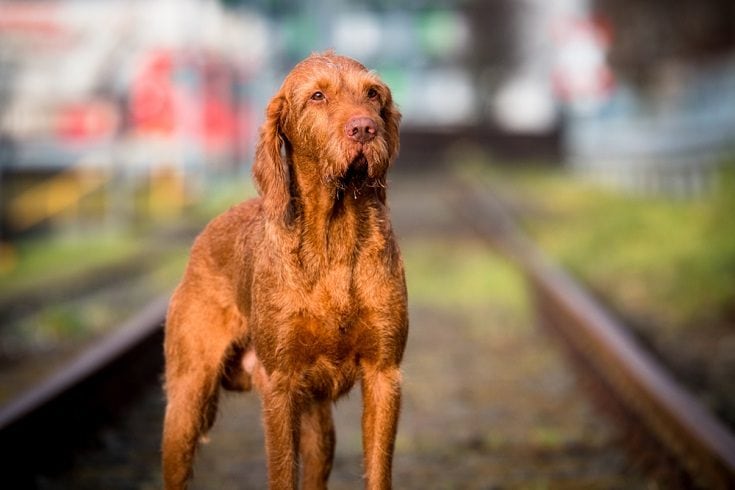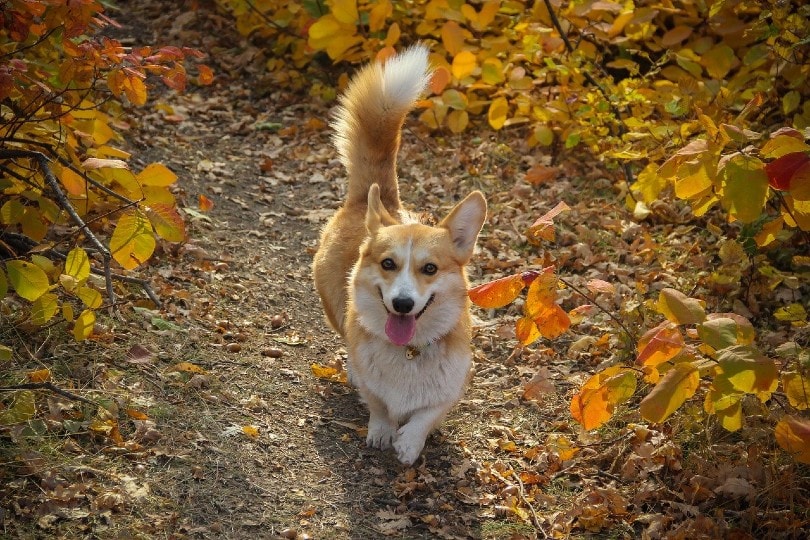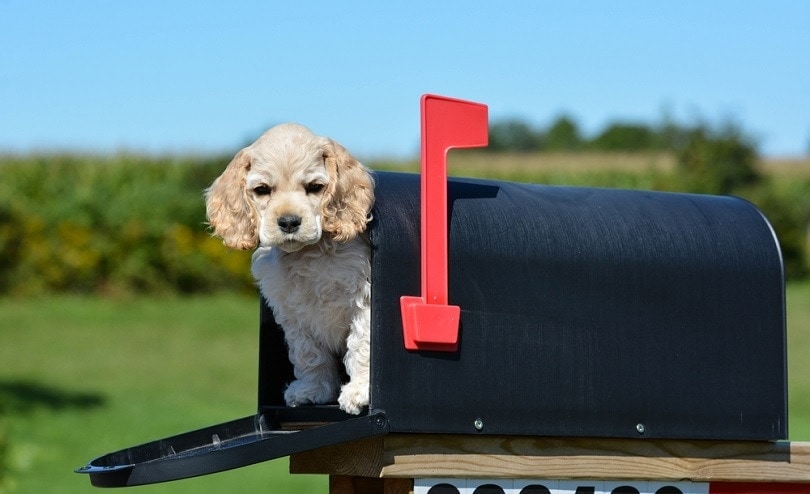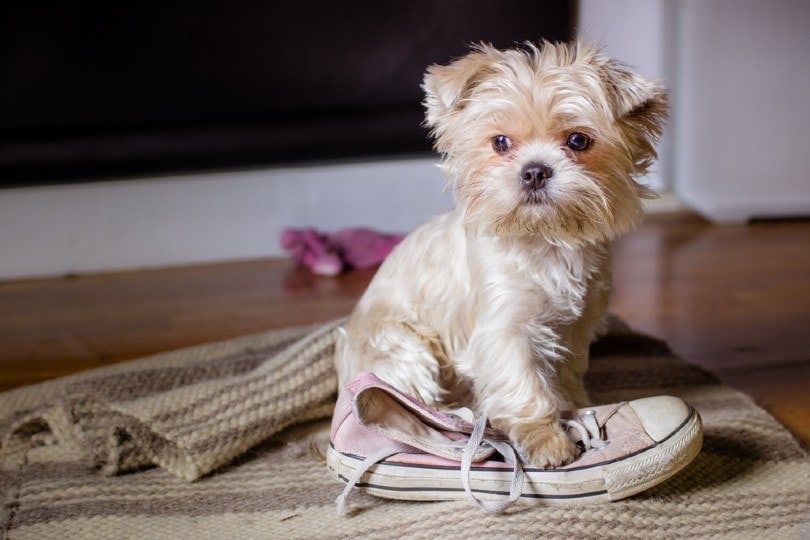Height:
21.5 – 25 inches
Weight:
45 – 65 pounds
Lifespan:
12 – 14 years
Colors:
Golden rust, red, sandy yellow, golden, rust
Suitable for:
Active families, house with a yard
Temperament:
Energetic, gentle, happy, loyal, easygoing, calm
The Hungarian Wirehaired Vizsla originated in Hungary and is a member of the American Kennel Club’s Sporting Group and is the 167th most popular dog. It is related to the more popular Vizsla (also in the Sporting Group and the 31st most popular dog) but is considered a separate breed. The Wirehaired Vizsla is a little bigger and heavier than the Vizsla, and its coat is longer, but they both sport the same colors.
The Wirehaired Vizsla is a medium-sized dog that is lean yet well-muscled and has a long muzzle and floppy, triangular ears. It sports a set of eyebrows and a beard, and its coat is wirehaired and weather-resistant. The standard color is golden rust but comes in a variety of similar colors such as red, golden, rust, and sandy yellow with white markings.
Hungarian Wirehaired Vizsla Puppies – Before You Buy…
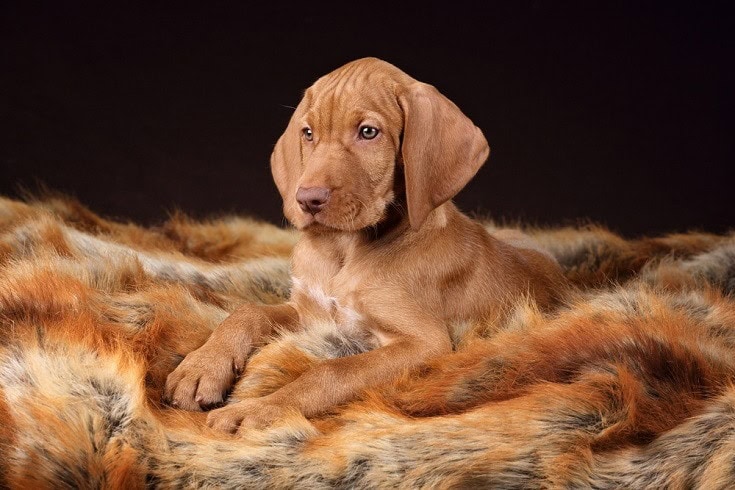
The Wirehaired Vizsla has loads of energy and is an overall healthy dog with a long lifespan for a dog of its size. They are relatively easy to train but have a tendency to get bored easily. They can be friendly if socialized early but might be aloof with strangers.
What’s the Price of Wirehaired Vizsla Puppies?
The Wirehaired Vizsla is a purebred dog, and if you plan on purchasing a puppy through a breeder, the price will run higher and could be $1200 to $2500.
When looking for a breeder, you should avoid anyone or any pet shop associated with a puppy mill and concentrate on finding a reputable and responsible breeder.
Here are 4 methods you can use when dealing with a breeder:
- Meet the breeder in person: Meeting up with the breeder at their location will allow you to look at how well they take care of their dogs and the kennels. Are the kennels clean, and do the dogs appear to be happy and healthy? Do the dogs get along well with the breeder? If you can’t meet with the breeder in person, use video chat.
- The dog’s medical history: A good breeder will provide you with their dog’s medical background and health test documentation.
- Meet the parents: Having the opportunity to meet your prospective puppy’s parents should give you a sense of how your puppy will act and look when it matures.
- Ask lots of questions: You should come prepared with questions for the breeder and ask as many as you feel are necessary. A responsible breeder will not only answer all of your questions but will encourage them.
There are additional costs for a puppy that goes beyond the initial purchase. Items that you will need for a puppy will include:
- Food
- Treats
- Water and food dishes
- Puppy training pads
- Leash, harness, and collar
- Play and chew toys
- Bedding and dog crate
Other expenses to consider might include:
- Vet appointments
- Spaying or neutering your puppy
- Grooming
- Obedience/training classes
- Microchipping
Buying a puppy through a breeder isn’t the only option available, of course. You could also look into adopting a dog through a rescue group. Adoption fees are much less (usually a range of $300 to $600) and sometimes even lower or completely waived if you adopt a senior or special-needs dog.
3 Little-Known Facts About the Wirehaired Vizsla
1. The name Vizsla is Hungarian for retriever and pointer.
The Wirehaired Vizsla is a gun dog and is, therefore, both a retriever and a pointer and was named after its hunting dog status.
2. The Wirehaired Vizsla has a beard and eyebrows.
Facial hair on a dog is usually called ‘facial furnishings,’ and many dogs naturally have this, including the Wirehaired Vizsla.
3. The Wirehaired Vizsla has issues with separation anxiety.
They are a very people-oriented breed and need to be around their family a lot of the time. If they are left alone for too long, they will become unhappy and destructive.

Temperament & Intelligence of the Wirehaired Vizsla
The Wirehaired Vizsla was originally bred in its native Hungary in order to be a little bigger and with a denser coat than the original Vizsla. They are very people-oriented dogs that will usually choose one person as their favorite and are protective of their family.
The Wirehaired Vizsla is highly intelligent, and a sensitive dog that is friendly and outgoing with their own family but might be standoffish with strangers. They are playful, affectionate, and lively and want to spend lots of time with their people.
Are These Dogs Good for Families?
The Wirehaired Vizsla makes an excellent dog for the right family but would do best with older children. If they are around younger children, their exuberant behavior might knock the little ones down, so there should always be supervision (as with any dog). All children, especially the young ones, need to be taught to respect all dogs.
Does This Breed Get Along with Other Pets?
If the Wirehaired Vizsla is socialized appropriately at a young age, they will get along very well with other pets, even the family cat. They have a high prey drive, so any small animals not a part of the family might be chased or worse. They should always be on a leash or in an enclosed area, so they don’t run off.

Things to Know When Owning a Wirehaired Vizsla:
Food & Diet Requirements
Any dog food you purchase should be based on your dog’s size, age, and activity level. The Wirehaired Vizsla is a medium-sized, high energy dog that will need a high-quality dry kibble (like this one for high-energy, adult dogs). You can determine how much and how often you feed your dog by following the guidelines on the back of the dog food bag and speaking to your vet.
Exercise
As previously mentioned, the Wirehaired Vizsla is a very energetic dog and will require a lot of daily exercise. Along with the usual long daily walks, you should bring your Vizsla along with you if you’re hiking, swimming, biking, or running. If the Vizsla does not get enough exercise or is left alone for too long, it will become bored and will resort to destructive behavior.

Training
Training the Wirehaired Vizsla can be a challenge. While they are lively, smart, and eager to please, they can also become bored quickly. The trainer must keep the sessions short and enjoyable for the Vizsla to retain interest. They are sensitive dogs, so they respond best to positive reinforcement and lots of love and praise along with firm and consistent training.
Grooming ✂️
The Wirehaired Vizsla is easy to groom and only needs a weekly brushing but a more frequent brushing during the shedding seasons of fall and spring. You should bathe your dog no more than once a month using a good quality dog shampoo (like this one).
Your Vizsla has long and floppy ears, which should be cleaned at least once a month. Their nails need trimming every 3 to 4 weeks, and their teeth need to be brushed about 2 or 3 times a week.
Health Conditions
The Wirehaired Vizsla might be prone to:
Your vet will check your dog’s eyes while performing the usual physical exam.
The Wirehaired Vizsla might be susceptible to:
- Elbow dysplasia
- Hip dysplasia
- Heart disease (subaortic stenosis)
Your vet will check your dog’s elbows and hips, and will run x-rays and listen to your dog’s heart with a stethoscope. The vet might also use an electrocardiogram or an echocardiogram if there’s any suspicion of heart disease.
Male vs Female
The male Wirehaired Vizsla is usually larger than the female, just like most dog breeds. The male is 23 to 25 inches in height and weighs about 55 to 65 pounds. The female is 21.5 to 23 inches in height and weighs around 45 to 55 pounds.
If you opt for surgery for your dog, neutering the male dog is an easier operation and, therefore, less expensive and has a shorter recovery time than spaying the female dog. Neutering or spaying will help to potentially give your dog a longer life as it can help ward off future health problems. It also has the advantage of lessening any aggressive tendencies your dog may have or preventing it from running off.
The final main difference between male and female dogs is in behavior and personality. There are many that believe that female dogs are easier to train and less aggressive than males, but there are discussions about this. However, what determines your dog’s overall temperament is how it was raised and trained as a puppy and how it is treated as an adult.
Final Thoughts
The Wirehaired Vizsla is very similar to its Vizsla cousin in personality and behavior but is larger, a little fuzzier, and sports a dapper beard and eyebrows.
There are a number of breeders of the Wirehaired Vizsla around the world, as long as you follow the 4 tips discussed earlier when you find a breeder close to your location. You can also talk to local and regional dog clubs and attend dog shows if you’re having difficulty locating a puppy. Consider getting in touch with Wirehaired Vizsla associations such as the Wirehaired Vizsla Club of America mentioned above or the Hungarian Wirehaired Vizsla Association in the UK. Posting on social media is another way to get your message out to a big audience.
The Wirehaired Vizsla will flourish with a very active family that can spend as much time as possible with this beautiful, happy, and loving dog.
Featured Image Credit: Shakarrigrafie, Shutterstock

